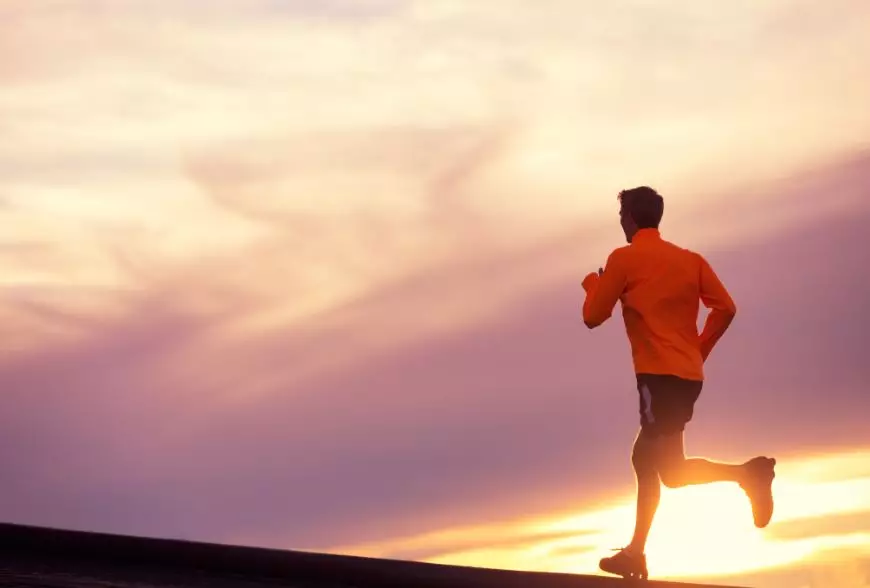Many glaucoma patients have the understanding that getting glaucoma is like having a terminal illness, and they need to protect their eyes at all times. They cannot do anything but rest at home, use eye drops, and cannot even do basic exercise. In fact, this understanding is incorrect.
Glaucoma patients are not incapable of doing anything, they can also exercise and move like normal people. Research has shown that appropriate exercise can provide effective assistance for the treatment of glaucoma.
The role of exercise in the treatment of glaucoma
·Exercise can dilate blood vessels throughout our body, reduce the reflux resistance of the scleral veins, and lower intraocular pressure.
As is well known, most glaucoma patients suffer from obstruction and poor circulation of aqueous humor, leading to an increase in intraocular pressure and damage to the optic nerve, resulting in visual impairment. Therefore, intraocular pressure is an important factor leading to the onset of glaucoma. Reducing intraocular pressure through exercise is very effective for the treatment of glaucoma.

·Exercise can increase the blood supply to the optic nerve and provide more nutrition to the optic nerve
The main criterion for diagnosing glaucoma is to observe whether the patient’s optic nerve is damaged. As a tissue structure in the eye, the optic nerve itself requires nutrition. Optic nerve ischemia (the blood carries the nutrients needed by the body) may cause optic nerve atrophy and disease in patients, which can accelerate the development of glaucoma. Proper exercise can increase the blood supply to the optic nerve, provide more nutrition to the optic nerve, and prevent it from being damaged.
·Glaucoma patients are exposed to more people and scenery through outdoor activities, so that they no longer only focus on the disease itself, but also pay more attention to life, which makes the patient’s mood comfortable and helps with the recovery of the disease.
In daily life, the most taboo for glaucoma patients is impatience and anger, as intense emotional fluctuations can cause excessive tension in the central nervous system, leading to an imbalance in the internal environment and an increase in intraocular pressure, resulting in the onset of glaucoma. Outdoor sports allow glaucoma patients to get close to nature, soothe their mood, stabilize their emotions, maintain a good mentality, and help improve their condition.
It should be noted that glaucoma patients need to pay more attention to things during exercise due to the influence of eye conditions.

What should glaucoma patients pay attention to when exercising?
01 Avoid strenuous exercise
Because vigorous exercise may cause glaucoma patients to:
The optic nerve becomes more ischemic and hypoxic: it redistributes blood throughout the body, significantly increasing the blood volume in the limbs, while reducing the blood supply to the head and internal organs. This makes the already poorly supplied optic nerve even more ischemic and hypoxic;
Elevated intraocular pressure: Intense exercise causes the blood vessels in the limbs to dilate while the blood vessels in the head and internal organs contract, resulting in increased resistance to the venous return of the sclera, ultimately leading to an increase in intraocular pressure.
Vascular rupture can cause complications: Intense exercise can cause already fragile blood vessels to rupture, leading to more serious complications such as intraocular bleeding, retinal detachment, choroidal detachment, and in severe cases, blindness. Therefore, glaucoma patients must avoid vigorous exercise.
02 Slow drinking speed
It is very important to drink enough water before, during, and after exercise, but it should be consumed slowly. Drinking 800-1000 milliliters of water within 15-30 minutes may also lead to an increase in intraocular pressure.
03 Do not lower your head, bend over, or squat for a long time
Such as yoga handstands, weightlifting, sit ups, etc. Long term movements such as bowing, bending, or squatting can significantly increase the blood reflux resistance of the jugular vein, which in turn increases the reflux resistance of the suprascleral vein. This further increases the already high intraocular pressure in glaucoma patients, exacerbating damage to the optic nerve and worsening the condition.
Therefore, glaucoma patients should engage in moderate exercise under the guidance of professional doctors, such as hiking, walking, doing exercises, playing tennis, mountain climbing, etc. When starting any high-intensity exercise, they should consult a glaucoma specialist and choose the appropriate exercise method according to their condition. This is beneficial for glaucoma patients.
In short, choosing a reasonable and appropriate way of exercise and persisting in it can greatly help maintain physical and mental health, as well as prevent and control glaucoma.
